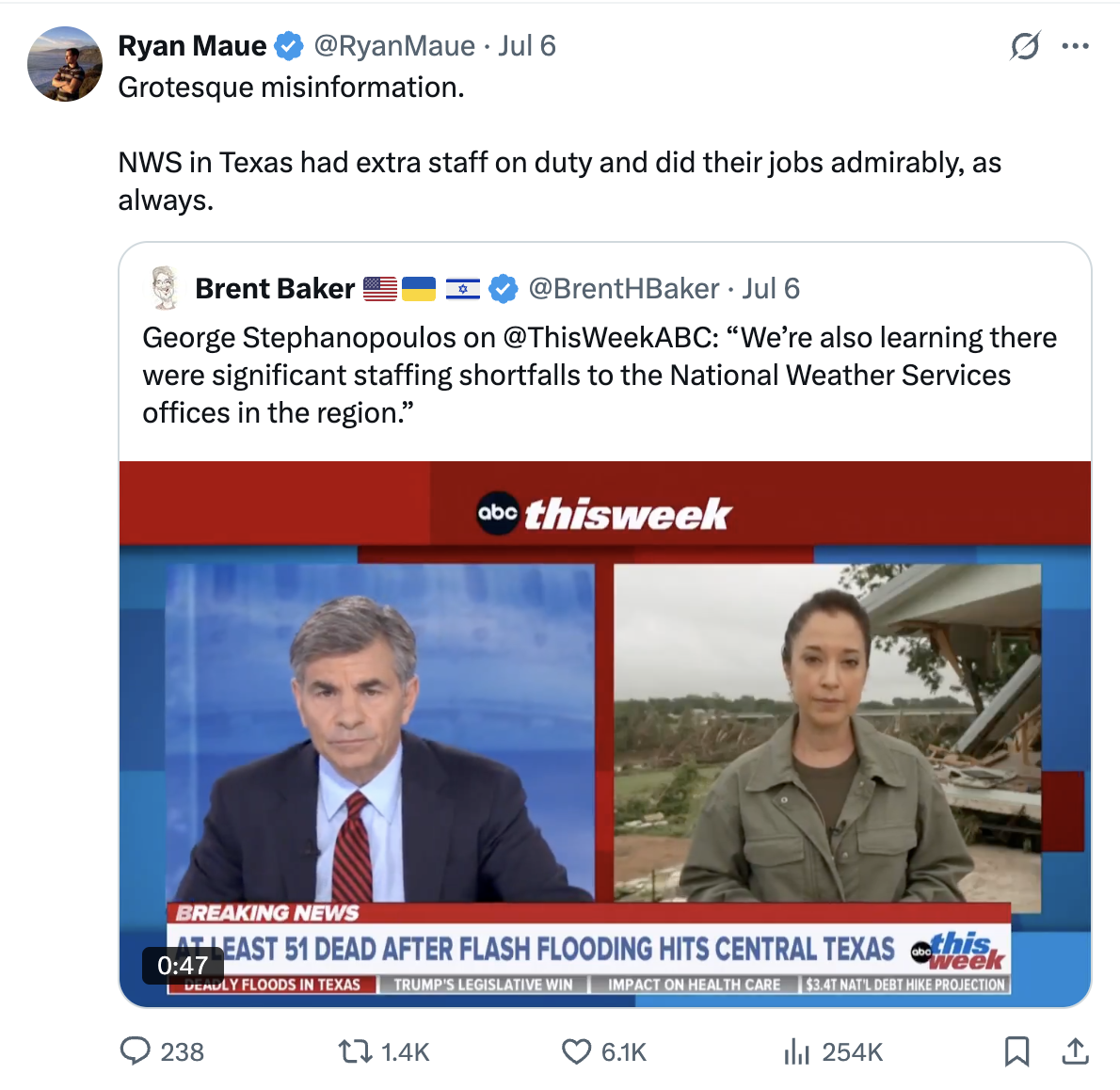Politics
NEW: Dems’ Anti-Trump Flood Narrative Debunked By Weather Experts
Meteorologists are forcefully pushing back against claims by Democrats, and suggestions in the mainstream media that cuts to the National Weather Service by the Trump administration are partly to blame for the deadly weekend flood that has killed more than 80 individuals as of Monday morning.
In the days since the Guadalupe River rose more than 30 feet in a matter of hours, weather experts have debunked claims from Trump critics that a handful of layoffs by the U.S. Department of Government Efficiency somehow contributed to delayed warnings to a Christian girls camp outside San Antonio, where dozens are dead and scores remain missing after it took a direct hit.
One of the most prominent media voices to blame Trump was ABC News’ George Stephanopoulos, who reported on Saturday that “there were significant staffing shortfalls to the National Weather Service’s offices in the region.”
While it’s true that staffing shortages at the NWS were roughly double the number before Trump took office, Texas meteorologists confirmed that they were receiving regular communication with the agency.
“The NWS forecasting offices were operating normally at the time of the disaster,” said Greg Waller, service coordination hydrologist with the NWS West Gulf River Forecast Center in Fort Worth, Politico reported.
“We had adequate staffing. We had adequate technology,” Waller said. “This was us doing our job to the best of our abilities.”
Tom Fahy, the legislative director for the National Weather Service Employees Organization, told the Texas Tribune that the current staffing levels were “adequate to issue timely forecasts and warnings before and during the emergency.”
The AP also reported “a series of flash flood warnings in the early hours Friday before issuing flash flood emergencies — a rare alert notifying of imminent danger,” beginning Thursday afternoon. Those broadcasts “grew increasingly ominous in the early morning hours of Friday,” culminating in a 4:03 a.m. message warning of “the potential of catastrophic damage and a severe threat to human life.”
Many of those messages were highlighted by the U.S. Department of Homeland Security in a lengthy series of social media posts, which denounced claims that the NWS was short-staffed.
Ryan Maue, a popular weatherman with a PhD in meteorology from Florida State University, called Stephanopoulos’s reporting “[g]rotesque misinformation.”
“NWS in Texas had extra staff on duty and did their jobs admirably, as always,” Maue tweeted Sunday.

Even Matt Lanza, a journalist who has been critical of the Trump administration’s cuts to NWS and NOAA, begrudgingly admitted on Saturday that they were unrelated to the disaster that unfolded overnight.
“In this particular case, we have seen absolutely nothing to suggest that current staffing or budget issues within NOAA and the NWS played any role at all in this event. Anyone using this event to claim that is being dishonest. … In fact, weather balloon launches played a vital role in forecast messaging on Thursday night as the event was beginning to unfold. If you want to go that route, use this event as a symbol of the value NOAA and NWS bring to society, understanding that as horrific as this is, yes, it could always have been even worse,” he wrote for The Eyewall.
Instead, public officials have pointed to the previous rejection of an emergency broadcast system by local residents who balked at the cost.
Rob Kelly, a top elected official in Texas’ Kerr County, told the AP that six or seven years ago, he proposed a nighttime warning system equivalent to the one used to alert residents to tornadoes.
“The public reeled at the cost,” he said.

